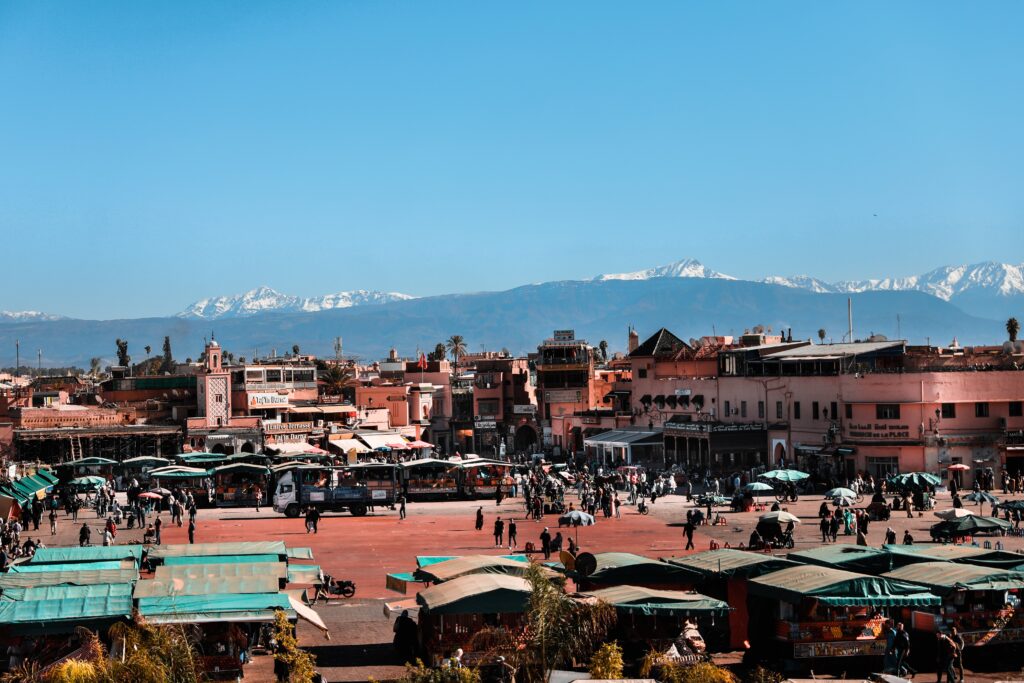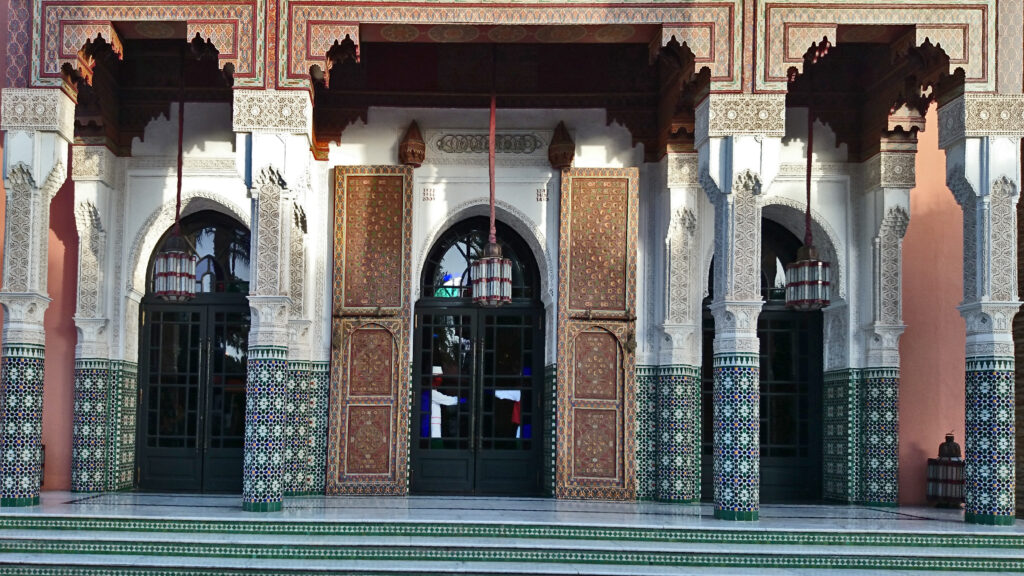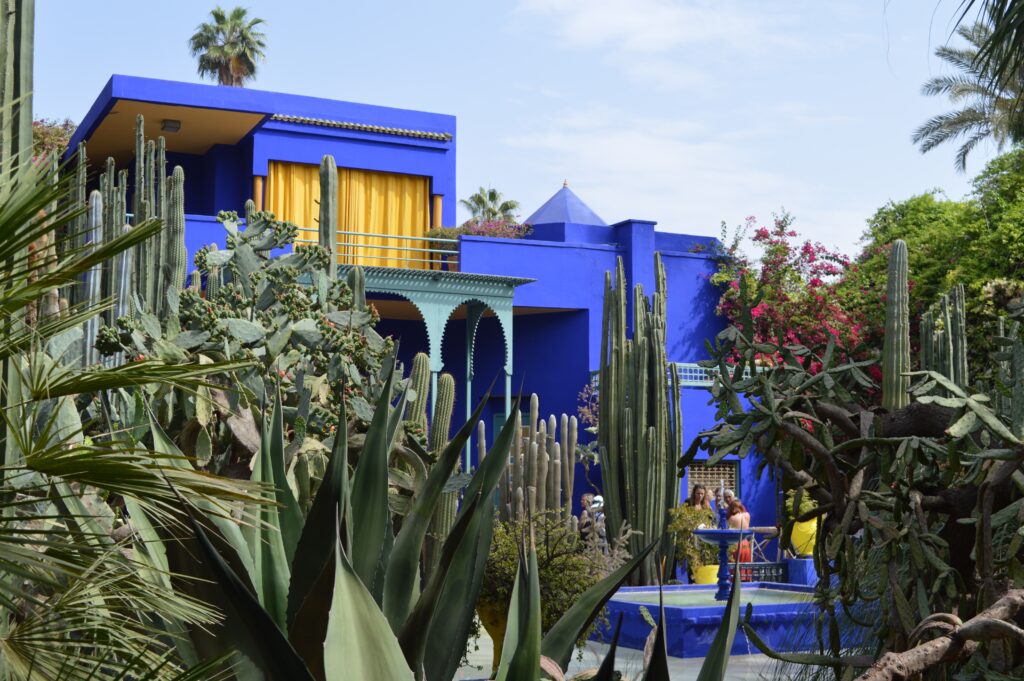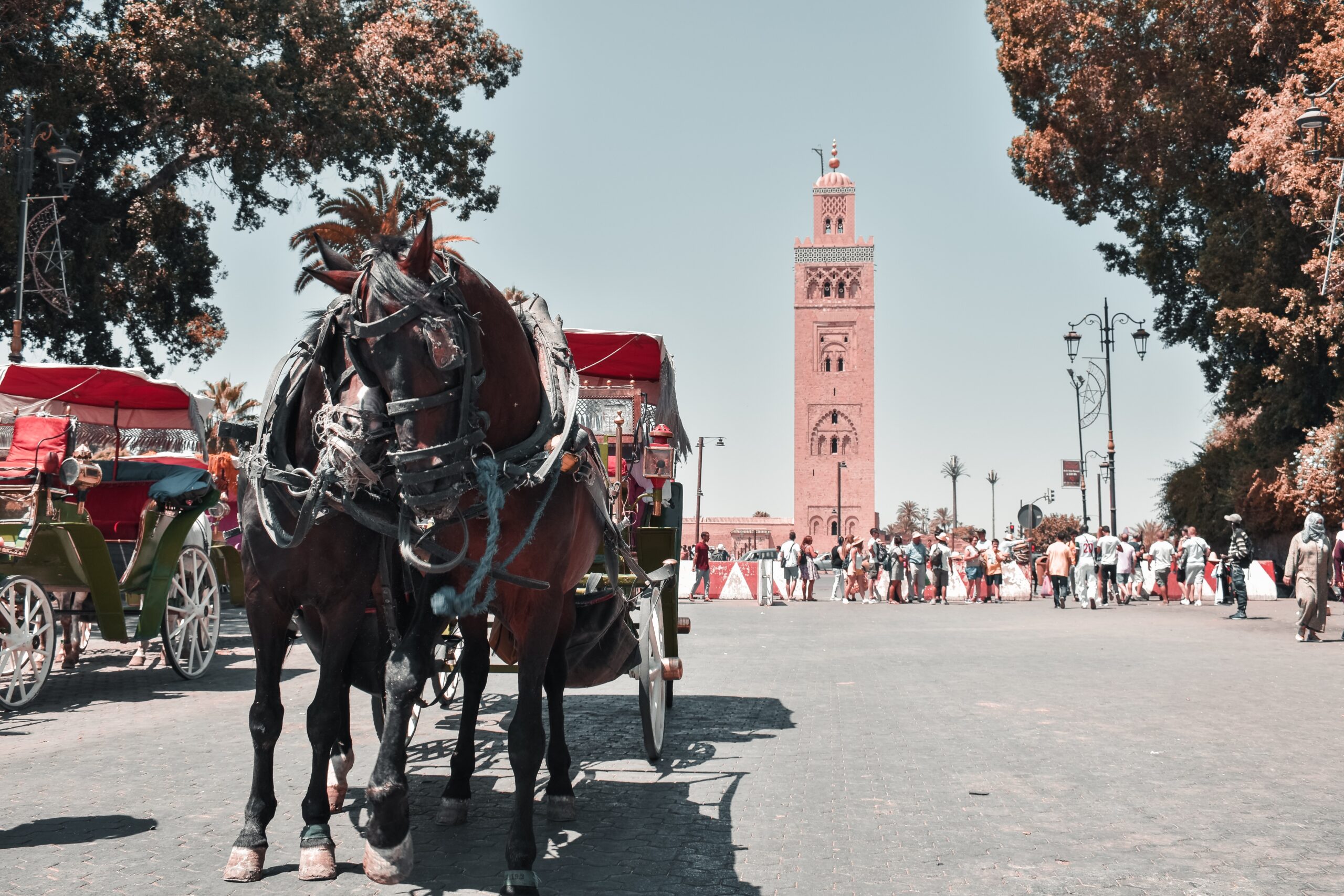The best time to visit Marrakech is during the spring months of March to May and the fall months of September to November. During these periods, the weather is comfortably warm, making it ideal for exploring the city’s vibrant streets, markets, and historical sites. Additionally, these seasons offer fewer crowds compared to the peak summer months, allowing visitors to fully immerse themselves in Marrakech’s rich culture and enjoy its stunning architecture and exotic atmosphere to the fullest.
Marrakech is so significant that it gave Morocco its name. This Berber city at the crossroads of the Sahara, the Atlas and the Anti-Atlas was the center of a powerful empire for more than two centuries, and the works of illustrious builders may be seen within the city’s walls. It is the capital of the great South, and while it is now just Morocco’s third largest city after Casablanca and Rabat, its magnificent palaces and lush palm groves continue to captivate visitors.
Best Things To Do In Marrakech:
Marrakech’s diverse quarters reflect the city’s rich history. The old town is represented by the medina, which rises above the minaret of the Koutoubia Mosque, the city’s icon. Its heart is the Place Jemaa el-Fna, the center of all activity. The souks (north of Place Jemaa el-Fna), the kasbah, and the mellah (the Jewish quarter) are all located within the ramparts. Gueliz, in the northwest, is the Protectorate’s new town laid out by Marshal Lyautey. It is home to Western-style offices, businesses, and a residential neighborhood.
The district’s principal roadway is Avenue Mohammed V. Hivernage, a verdant neighborhood with many hotels that dates from the Protectorate, extends Guéliz to the southwest. The region is bounded on the west by the Menara Gardens and on the east by the medina’s walls.
Jemaa el-Fna Square:
For decades, this one-of-a-kind and remarkable square has served as the heart of Marrakech and the city’s symbol. Although it is nothing more than an irregular space devoid of a coherent ensemble of buildings, it attracts visitors primarily as a presentation of traditional Morocco. It has been designated a UNESCO World Heritage Site.
It has a grim history: until the 19th century, criminals sentenced to death were beheaded here. On a single day, up to 45 persons were executed, their heads pickled and strung from the city gates.

Koutoubia Mosque
To commemorate his victory over the Almoravids, Almohad ruler Abd el-Moumen began construction of one of the greatest mosques in the Western Muslim world around 1147. The minaret, a masterwork of Islamic construction, was built during the reign of Yacoub el-Mansour, Abd el-Moumen’s grandson. It was later used as a model for the Giralda in Seville and the Hassan Tower in Rabat. The “Booksellers’ Mosque” was named from the manuscripts souk that once surrounded it.
A ramp inside the minaret is used to transport building materials to the pinnacle. The mosque’s masonry has been restored to its original pink color.
Bahia Palace
This palace, whose name means “Palace of the Favorite,” was built at the end of the 19th century by two prominent grand viziers – Si Moussa, vizier of Sultan Sidi Mohammed ben Abderrahman, and his son Ba Ahmed, vizier of Moulay Abdelaziz. The palace complex is divided into two sections, each erected at a distinct epoch. The older section, designed by Si Moussa, is made up of apartments set around a marble-paved courtyard.
There is also an outdoor courtyard with cypress trees, orange trees, and jasmine, as well as two star-shaped pools. The newer section, erected by Ba Ahmed, is a massive palace with no cohesive design. It is made up of magnificent apartments that look out over tree-lined courtyards. Almost all of the apartments were on the ground floor to make it easier for the house’s fat master to move around.
La Mamounia Hotel
The famed hotel La Mamounia, which opened in 1923, is built on the site of a mansion that belonged to the son of Alaouite monarch Sidi Mohammed in the 18th century. The exquisite 130,000-square-meter garden, covered with olive and orange trees and housing a pavilion built by a Saadian prince in the 16th century, is all that remains of that home.

Dar Si Saïd Museum
The modern Dar Si Sad is a short distance from the Palais Bahia. This charming palace, now a museum, was erected in the late 1800s by Si Sad ben Moussa, Ba Ahmed’s brother and vizier of Moulay Abdel Aziz. The decoration alone is worth a visit, with zellij tilework, elaborate plasterwork, and carved or painted wooden domes.
Majorelle Garden
In the midst of Ville Nouvelle (the new town), this magnificent garden is like a miniature paradise. In 1923, Jacques Majorelle fell in love with Morocco and constructed himself a magnificent Moorish villa in Marrakech, which he named Bou Safsaf. He developed the zellij tilework patterns, painted the front door. And adorned the inside in deep blue, green, and dark red tones. Around the house he laid out a luxuriant garden. Sinoir, the architect, designed an Art Deco studio with pergolas and bright blue walls at Majorelle’s request in 1931.
In 1947, the garden, which is separate from the home, was opened to the public. Yves Saint-Laurent, the famous couturier, and Pierre Bergé later purchased the house. The garden has been skillfully repaired and is divided by four walkways that cross each other to create parterres of brightly colored tropical flowers. The garden features about 400 varieties of palm trees and 1,800 species of cacti in addition to yucca, bougainvillea, bamboo, laurel, geraniums, hibiscus, and cypresses. Water lilies flourish in a papyrus-lined pool.

The Souks
Marrakech‘s souks are among the most fascinating in the Maghreb. They are arranged along the tiny lanes north and east of Place Jemaa el-Fna according to the distinct type of the commodities on offer. The orange area on the map represents the traditional center of the souks. Which extends from the Ben Youssef Mosque in the north to the Souk Smarine in the south. Many of the souks are named after the items sold there. Today, a vast variety of things are available, ranging from fabric to jewelry and shoes.
Leatherwork is especially noticeable. The crafts historically associated with country folk, such as blacksmithing, saddle-making, and basketry, are concentrated around this commercial centre. The tanneries have been relocated to the outskirts of town due to foul odors.
In conclusion, determining the best time to visit Marrakech is a nuanced decision influenced by various factors. Including weather preferences, crowd tolerance, and budget considerations. As reiterated throughout this blog, the best time to visit Marrakech truly depends on individual preferences and priorities. Whether it’s the vibrant atmosphere of the city during the bustling summer months. The cooler temperatures and festive events of spring and fall, or the serene charm of winter. Marrakech offers something for every traveler. By considering the information provided here and weighing the pros and cons of each season. You can make an informed decision that aligns with your travel goals and ensures a memorable experience in this captivating destination. Ultimately, the best time to visit Marrakech is the time that suits you best. Allowing you to fully immerse yourself in the rich culture, history, and beauty that this enchanting city has to offer.


